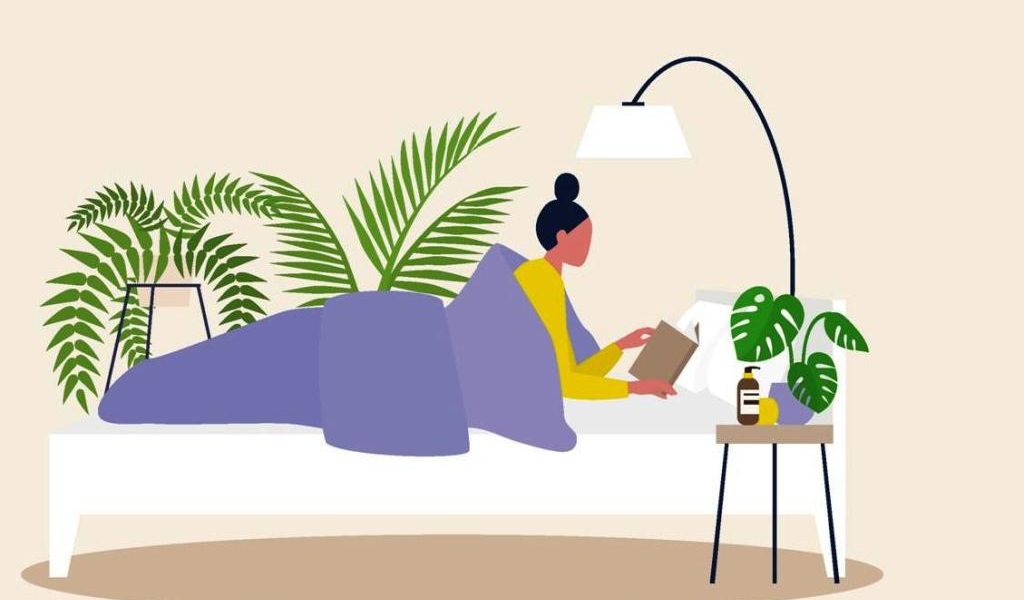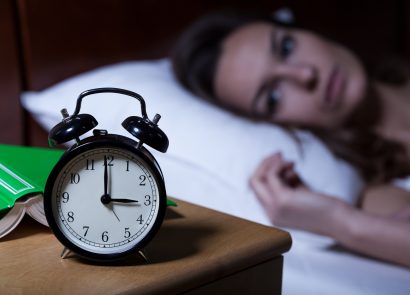Forget counting sheep, this routine will have you drifting off into a blissful night’s slumber in no less than 60 minutes
Sleep – we all want it but can’t get enough of it. With almost a third of the nation browsing the internet, one in five checking their phone or tablet, and 21 percent drinking alcohol in the hours before bed*, it’s no wonder we’re a nation with a nocturnal existence. But, with a few changes to your nightly routine, here’s how you can fall asleep not only naturally, but also in just one hour. Sweet dreams!
60 minutes to go
Use aromatherapy
“There are many essential oils that can aid relaxation to induce sleep naturally and safely without nasty side effects,” explains Sharon Lovett from Base Formula (baseformula.com). “Chamomile, lavender and neroli are three of the most useful oils, as they have a profoundly calming, soothing and balancing effect on mind and body. Other useful sedative oils are benzoin, bergamot, cedarwood, clary safe, sandalwood, sweet marjoram, sweet orange, valerian and vetiver. It’s good to vary the oils you use, particularly if you’re using them for more than a couple of weeks, as the body soon gets used to them. Diffuse essential oils an hour before bedtime – try six drops of sweet orange, two drops of chamomile and two drops of neroli. Or, simply pop a few drops of oil onto a tissue or cotton pad and place it in your pillowcase – try one drop each of cedarwood, chamomile and lavender.”
50 minutes to go
Light therapy
Allow yourself time without blue lights before bed. This means no phone, TV, or other electronic devices. Instead, try light therapy and allow the gradual dimming of lights to help let your body know that the day is over and it’s time to switch off.
“Humans depend on light, but modern lifestyles have our bodies so confused and, in effect, often fatigued and sleep deprived,” says Jonathan Cridland from Lumie. “Light is a natural stimulant that helps you feel positive, upbeat and full of life, as well as keeping your circadian rhythm on track. By recreating a gradual sunset with a light simulated clock, such as the Lumie Bodyclock Spark 100 (£75, lumie.com), it allows you to wind down completely and feel ready for sleep. Equally, the next day you wake up refreshed with a brightening sunrise-through dawn simulation.”
30 minutes to go
Take a bath
“Not just relaxing and warming, having a bath before bedtime can actually help to promote sleep and induce tiredness,” says Neil Robinson, chief sleep officer at Sealy UK (sealy.co.uk). “The drop in body temperature experienced immediately after you’ve got out of a hot bath is a great way to minimise the body’s natural decrease in temperature as it prepares itself for sleep. This includes feelings of drowsiness and readies you for a good night’s rest.”
15 minutes to go
Do some pilates
“Doing a few Pilates moves is a great way to aid a restful night’s sleep,” explains Lyndsay Hirst, physiotherapist and founder of Your Pilates Physio (yourpilatesphysio.com). “The moves increase serotonin levels, which are known to help sleep. The combination of breathing techniques with muscle and joint stretches also makes Pilates an incredibly relaxing workout to do before bed. My suggestion would be to do 10-15 minutes before dozing off. Start by doing some standing shoulder rolls – standing in a relaxed but tall position, lift your shoulders towards your ears as you take a big deep breath in. Exhale as you draw your shoulders back. Repeat five to 10 times. Next, try hip twists: lay on your back with your knees bent, feet and knees together and your arms out to the side. Inhale to prepare then, as you exhale, drop your knees to the right and, at the same time, your head turns to the left. Inhale to return, exhale and repeat on the opposite side. Repeat five to six times.”
Five minutes to go
Try breathing techniques
“Breathing is the only system in your body that is both automatic and also under your control,” explains Richie Bostock, breathwork expert. “The next time you are struggling to get some shut-eye, try a style of breathing called 1-2-1 breathing. The ‘1-2-1’ refers to the length of each step of the breath, which is one part inhale, two parts exhale and one part pause. To start, put one or both hands over your belly button and, when you breathe in, inhale through your nose and feel your hands rise a few centimetres and then fall a few centimetres as you exhale. Then, try extending the length you inhale and exhale each time. Repeat until you drift off to sleep.
How to create a sleep haven in your bedroom
Get the right duvet
“The correct duvet will keep you at just the right temperature so you’ll enjoy deep sleep every night, even if it is cold outside,” advises Neil. “Opt for a 13.5-15 tog duvet for the winter months and, for the summer months, you’re best going for a 4.5 tog duvet.”
Consider temperature
“Although it can be tempting to turn the heating up to full to keep your room cosy, having your bedroom too warm throughout the night can impact on the quality of your sleep,” says Neil. “The optimum temperature during the night to ensure good quality sleep is 16-18°C, so it’s important to remember to turn down the heating with enough time to allow your room to cool to the optimum temperature.”
Be inspired by Feng Shui
“Untidiness in your bedroom will stagnate the energy of your space and leave you feeling drained and restless,” explains shui designer and wellness coach Alexandra Lees (wuweiwisdom.com). “For a good night’s sleep, you must simplify, streamline and neatly organise the contents of your room. Declutter visible areas, such as dressing tables, then tidy hidden spaces, such as behind your bedroom door and inside wardrobes, as unseen mess here will still affect you. The most important area to keep clear is under your bed because of its proximity to you when you sleep.” Alexandra also suggests that you consider your bed’s location. “Position your bed with a wall behind you or add a solid headboard to create a strong energy. To support relaxation, move your bed near a window for natural ventilation, but ensure that you’re not affected by unwanted cold draughts or outside noise.”






















